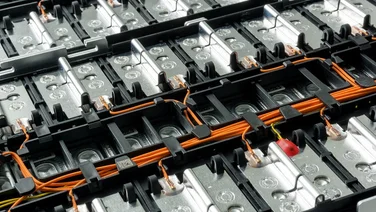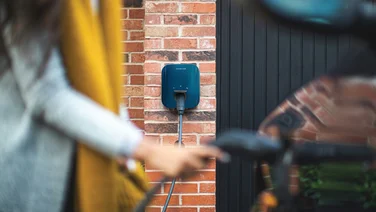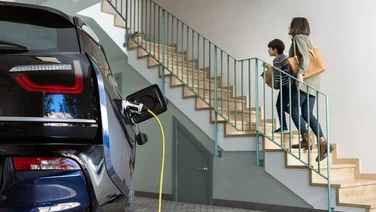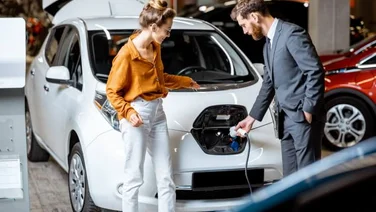We receive a small fee from trusted installers when you request a quote through our site. This helps us keep our content independent, well-researched and up to date – Learn more
- Best small charger: Wallbox Pulsar Max
- Best future-proof charger: Zaptec Go 2
- Most versatile charger: Easee One
- Best for tariff: Ohme Home Pro
- Best for solar panels: Myenergi Zappi
- Best with tethered and untethered options: Powerverse VCHRGD Seven
- Best customer service: Hypervolt Home 3 Pro
- Best looking charger: Andersen A3
- Best budget charger: Project EV EVA-07S-SE-C
- Best for extreme weather: Rolec Wallpod
- Best for security: EO Mini Pro 3
- Best for remote support: Pod Point Solo 3S
- How we chose the 12 best home EV chargers
- Next steps
- Save hundreds of pounds a year with your own electric vehicle charger
- We rated the 12 best home EV chargers against 10 key criteria
- Criteria include warranty, value for money and customer feedback
- Read our guide before choosing the best EV charger for your home

Switching to an electric vehicle (EV) slashes your carbon footprint, but what about your bills? Charging your EV can be expensive if you rely on public chargers. To save money as well as the planet, use a home EV charger instead.
Charging your EV from home is much cheaper than charging in public. You’ll save hundreds of pounds a year, especially if you’re on an EV-friendly electricity tariff.
If you link your charger to your solar panels, you’ll cut your electricity bill further still. Some chargers even automatically use your panels’ surplus energy to charge your EV.
The average 7kW charger costs between £500 and £800, and installation costs add about £200. To help you spend your money wisely, we’ve compiled a list of the best home EV chargers for criteria such as compactness, budget and ease of use.
Jump to the bottom of the page for more about our review criteria, or read on to discover our top 12 chargers.
Get free EV charging point quotes
Answer a few quick questions, and our trusted installers will send you bespoke EV charging point quotes – for free.
Best small charger: Wallbox Pulsar Max
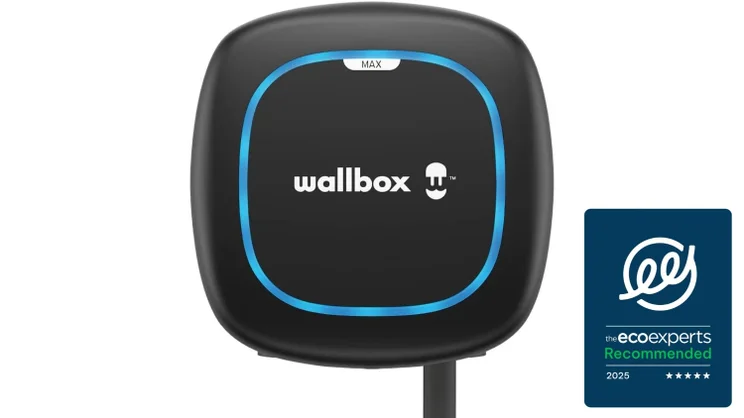
The Wallbox Pulsar Max is available in models as powerful as 22kW, but don’t be tempted to fork out for more charging power than you need. The 7.4kW option packs as much charging power as the typical home needs. And at just 1.3kg, it’s one of the dinkiest chargers on the market.
The Pulsar Max is now available in two versions. You can get it as as a “tethered” charger whose cable is permanently attached, or as an “untethered” charger whose cable you can remove for storing in your garage or boot. Each type has pros and cons. Tethered chargers are the easiest to use at home, but the untethered version lets you use any compatible cable to charge pretty much any EV.
Wallbox’s unit looks great and has a sturdy build quality. We’re also impressed by the app, which has options to set up schedules, monitor charging, and even lock the charger when you’re not using it. The app connects via Bluetooth as well as Wi-Fi, which is handy if your home Wi-Fi struggles to reach your garage.
The Pulsar Max is nicely priced at around £500-£600 before installation, and it’s widely available. You can even buy it on Amazon, but we recommend having it supplied and installed by a professional.
- Comes in tethered and untethered versions to suit all users
- Takes up minimal space – even with its permanently-attached cable
- Lovely black design with green LEDs and a sturdy build
- Excellent app with easy connectivity and loads of controls
- Great value and widely available
- Standard two-year warranty could be longer
Best future-proof charger: Zaptec Go 2
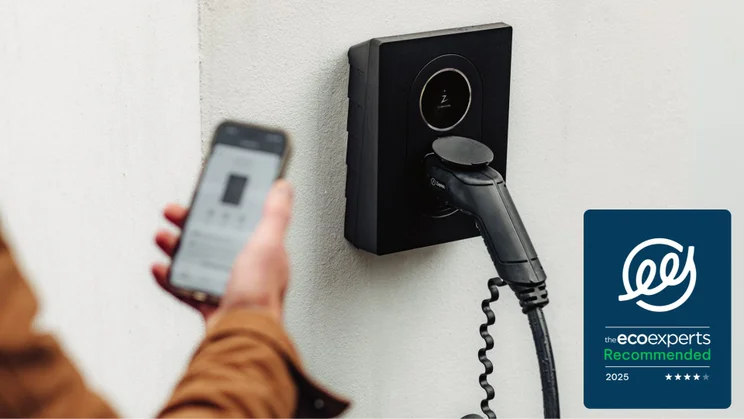
Zaptec’s compact new Go 2 is the first home EV charger in the UK to support vehicle-to-grid (V2G) technology. V2G allows EV drivers to sell their excess electricity back to the National Grid, using bi-directional (two-way) charging.
The 22kW Zaptec Go 2 retains many of the features we loved in its predecessor, the Zaptec Go. These include the superb Zaptec App, which you can use to remotely lock and unlock the charging cable. The app also lets you grant access to family and friends, enable Eco Mode to find the cheapest electricity rates, and view your charger’s full energy consumption history.
The Go 2 offers faster charging than the Go, and has numerous other below-the-bonnet improvements. For instance, it switches between 1 and 3-phase charging to for the smoothest possible integration with your solar panels. Zaptec is also aiming for speedy over-the-air updates, using subscription-free built-in 4G.
- V2G technology lets you sell energy to the National Grid
- Zaptec App is superb, with features such as cable locking, Eco Mode and family access
- Compact and great looking, with six colour options
- Untethered design lets you remove the cable for tidy storage
- Outstanding five-year warranty
- May not work with all EV tariffs
Most versatile charger: Easee One
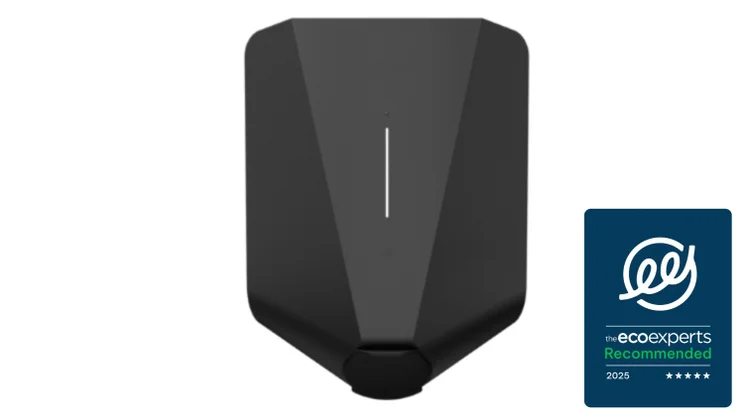
The 7.4kW Easee One is a tethered and untethered EV charger in one. To switch between the two modes, you just tap a toggle in the user-friendly app. This means it’ll be compatible with new types of charging cable as they arrive on the scene.
At 1.5kg the Easee is tiny, but it’s no lightweight when it comes to build quality. We love the rugged handsomeness of its distinctive helmet-like design.
Its controls are user-friendly and its app is brilliantly intuitive, even for EV beginners. The charger is even designed for easy installation, although we don’t recommend doing it yourself.
- Tethered and untethered options in one unit make it compatible with all EV types
- Intuitive controls are great for beginners – and it's even easy to install
- Looks fantastic and comes with interchangeable colour covers
- Costs under £600 before installation
- No status screen, just small LED lights
Best for tariff: Ohme Home Pro
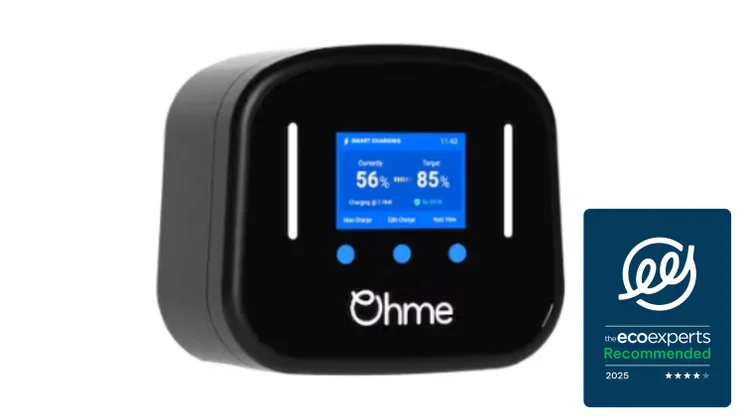
The 7.4kW Ohme Home Pro is one of three home EV chargers available under Octopus Energy‘s new Octopus Charge package. This package includes charger and installation from £899 total, and slashes your charging costs with the Intelligent Octopus Go tariff.
There’s a lot to love about the Ohme Home Pro, even if you don’t get it from Octopus. The tethered unit’s built-in screen is packed with controls, so you can view charging data or make changes without having to pick up your phone.
When you do want to control it remotely, its app is the best around. It’s easy to use, and functions include tariff syncing and automatic distance-based charging. Just let it know how many miles you’d like to charge, and by what time, and the machine will charge your car – during off-peak hours only.
- Excellent power capacity of 7.4kW
- Outstanding smart settings such as automatic distance-based charging
- App and unit are fully functional over mobile data as well as Wi-Fi
- Available with Octopus Energy's new EV charging tariff
- No untethered option
Best for solar panels: Myenergi Zappi
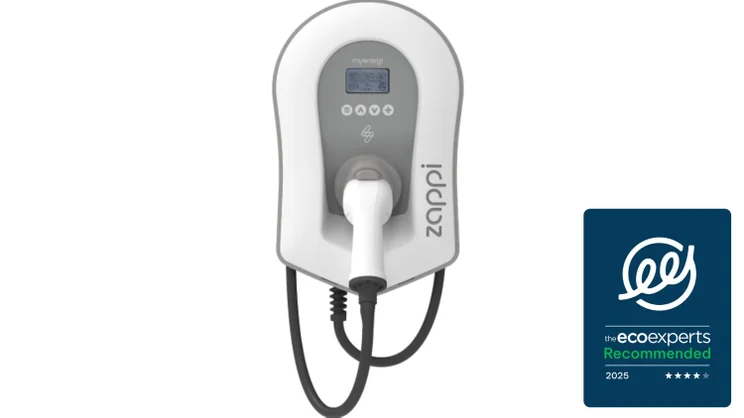
All home EV chargers are cheaper to run if you have solar panels, because your panels can feed them with lovely free solar electricity. But the Myenergi Zappi goes a step further with its Eco+ setting, which automatically redirects any surplus energy from your solar panels to your electric vehicle.
The charger also has a Fast mode for charging as quickly as possible. You can see and select your charging mode and power source from the Zappi’s excellent app, which works with other Myenergi products for full smart home control.
Like the Powerverse VCHRGD Seven, the Zappi comes in tethered and untethered models (tethered model pictured above). Both the black and white options look a little like defibrillators, but it’s good value at around £665 before installation.
- Integration with solar panels makes this a great choice if you have a PV system
- Three charging modes are quick and easy to switch between
- Good value at around £665 for tethered or untethered before installation
- Companion app is easy to use and full of handy functions
- Heavier than average
- Looks clunky compared with newer rivals
Best with tethered and untethered options: Powerverse VCHRGD Seven
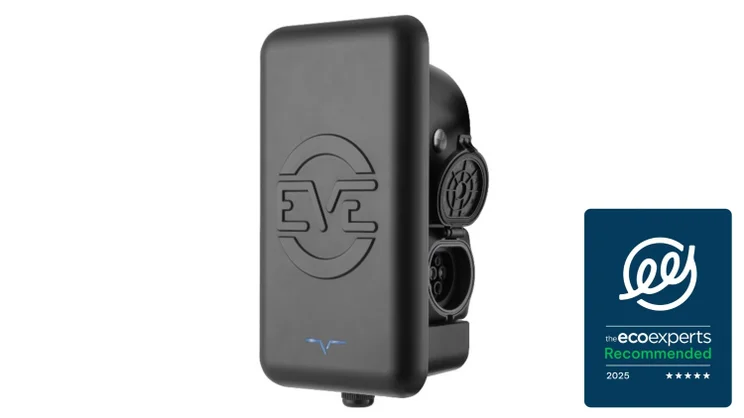
The 7kW VCHRGD Seven comes in tethered and untethered versions. The tethered version is easy to use thanks to its permanently-attached cable, but the untethered version lets you remove the cable and stash it in your garage or boot – and then switch to a different cable if you chance your EV.
This charger is solar-ready, so it’s easy to pair with your solar panels. Its companion app uses AI to automatically balance your power sources to boost efficiency and keep your bills down. The app also lets you control your charging, track your history and utilise smart tariffs.
Despite its swish appearance and advanced features, this is an excellent value home EV charger. UK-based Powerverse will supply and install the tethered or untethered model for under £900.
- One of few chargers to come in tethered and untethered models
- Three-year warranty is above average
- Solar ready, so it's easy to link with your panels
- Excellent AI app that automatically balances power sources
- Customers rate professional service with good communication
- Some users find the app over complicated
- The rather masculine-looking charger won't be to everyone's taste
Best customer service: Hypervolt Home 3 Pro

We always scour customer reviews when reviewing products, and Hypervolt’s feedback really stood out from the crowd. Verified users hail its “first class service… excellent, very professional”.
The 7.4kW Hypervolt Home 3 Pro, another of the chargers available under the new Octopus Charge service, is only available as a tethered unit. It’s larger than some competitors, weighing 6.15kg with the 5m cable attached. However it’s a great-looking unit, and has a cable tidy built in.
The Hypervolt Home 3 Pro uses Wi-Fi to enable smart features such as solar panel integration, scheduled charging and real-time energy monitoring. The big lightning bolt on the unit indicates its status (charging, standby and so on). Luckily you can switch this off if you’re not a fan of year-round Christmas lights.
- Outstanding customer feedback was the best we saw for an EV charger
- Handsome unit in a choice of colours: grey, white or black
- Colour-coded LED lightning bolt reveals charging status – and can be switched off
- App is one of the best we looked at, with plenty of features
- No untethered option
- Bigger and heavier than some rivals
Best looking charger: Andersen A3
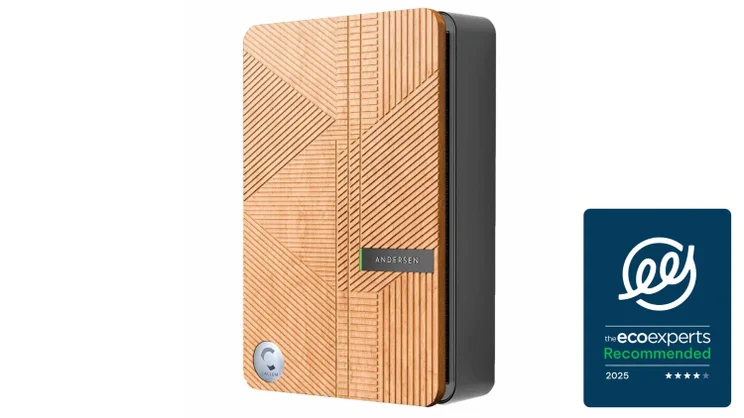
We previously named the Anderson A2 “best looking charger”, but it’s been pipped in the beauty contest – by its successor, the A3.
This sleek, modern charger comes in dozens of colours and finishes, including some limited editions that will turn your neighbours’ heads for all the right reasons. If a multi-coloured or carved wood finish isn’t for you, there are many classy plain colours to choose from instead. The A3 is tethered, but the cable is concealed inside the box.
Prices have come down since the A2, but this is still a relatively pricey charger. You can snap an A3 from Andersen for £995, or around £1,100 from third-party retailers. But it has by far the best warranty on our list, at an impressive seven years if you use Andersen’s installers, and customer service is reportedly outstanding.
- Wide range of stylish colour and finish options
- Excellent feedback from customers on installation and support
- App is easy to use and full of info about your charger's activity and costs
- Seven-year warranty if installed by Andersen installer; three years if not
- The unit is big and heavy…
- … and so is the price tag of £995 or more
Best budget charger: Project EV EVA-07S-SE-C
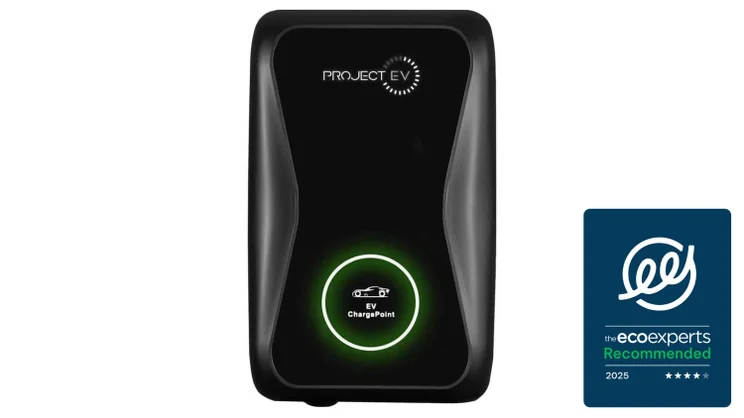
At under £500 for an untethered 7.3kW unit with a five-year warranty, the Project EV EVA-07S is a great buy. Charging cables and installation will bump up the cost, and features such as 4G support need to be added later on.
This charger is produced in China and licensed to Project EV in the UK. It’s also known as the ATESS or Growatt, which can be confusing. But it’s much less confusing to use, not least because its functionality is quite basic.
The bundled app simply lets you start and stop the unit remotely, check how much it’s charged, and organise charging schedules to fit your tariff. You can add extra features with Project EV’s Pro App, which is designed for business users.
- Five-year warranty is well above average
- Basic functionality covers all the essentials, including charging when your electricity is cheapest
- Licensed in the UK to Project EV, which gets excellent customer feedback
- You have to buy a charging cable separately
- Doesn't include mobile data connectivity
Best for extreme weather: Rolec Wallpod
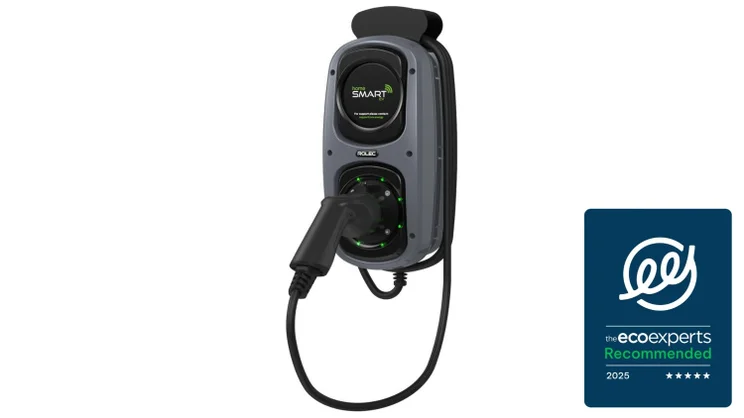
The UK-made 7.4kW Rolec WallPod is one of the more expensive home EV chargers on our list, at around £850 without installation. Rolec sells directly to electrical wholesalers rather than to the public, so you’ll need to find your own approved installer. Is it worth the hassle and expense?
If you live in an exposed spot, yes it’s worth it. This unit operates in temperatures from -30°C to +50°C, so it won’t let you down in a sweltering heatwave or the worst extremes of winter.
The companion app is excellent, too. It’s both sophisticated and easy to use, with innovative smart functions. For example, you can control the charger from anywhere in the world.
- Excellent extreme weather operation
- Three-year warranty as standard
- Excellent companion app, plus Alexa and Google Assistant compatibility
- Comes in tethered and untethered models
- At the top end of the price range, and you can't buy direct from Rolec
- Old-school unit looks like a futuristic petrol pump
Best for security: EO Mini Pro 3

We love the appearance of the British-made EO Mini Pro 3. Its latest version 3 looks like a compact high-end audio speaker. The charger comes in tethered and untethered versions, both offering up to 7.2kW of charging power.
EO’s accompanying app gets mixed reviews from users. Some say it’s slow, while others love the remote locking feature that lets you make the unit usable only at certain times. If you’re worried about passers-by stealing your charge, this would be the charger to go for.
- Tethered and untethered units cost as little as £500
- Small, sleek unit looks great
- App lets you set a locking schedule for extra security
- Some users complain the app can be slow
- EO gets a less than impressive 3.4 average score on Trustpilot
Best for remote support: Pod Point Solo 3S
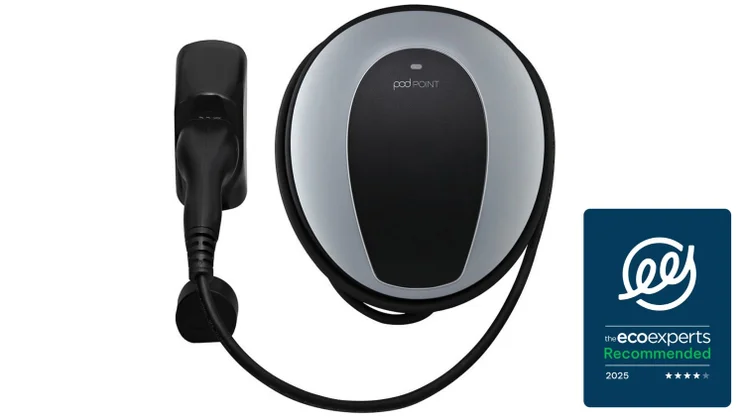
Pod Point really knows its chargers. Founded in 2009, the company has provided more than 9,200 public chargers across the UK and more than 211,000 installations in total.
Pod Point’s Trustpilot score of 4.5 from 24,000 users dwarfs all other brands in our line-up. Customers rave about the “great charger and even better service”. The Pod Point Solo 3 connects to your Wi-Fi network so the support team can quickly resolve any issues.
The Solo 3 is an affordable unit that you can buy tethered or untethered. Both come with an impressive five-year warranty as standard. The unit and app aren’t the most innovative we’ve seen, but you do get basic smart features. For instance, auto power balancing alters your charging speed to ensure your home isn’t overloaded.
- UK-based company boasts Trustpilot score of 4.5 from 24,000 users
- Costs around £600 before installation
- Software updates and customer support over Wi-Fi
- Five-year warranty and good operating temperature range suggest this is a durable unit
- App and smart functions are fairly basic
- Unit is quite large, but some will like its round shape
How we chose the 12 best home EV chargers

Home EV charging is a fast-growing market in the UK, with plenty of criteria to keep up with. Here are the main benchmarks we looked for:
- Affordability. A home EV charger cuts the cost of running your car by up to 90%, so a £700 EV charger could pay for itself in as little as a year. We prioritised chargers that deliver around 7kw or more of charging power for this price or less.
- Ease of use. Home EV chargers should make your life easier, not harder. We excluded chargers whose customers complained about tricky apps and settings.
- Warranty. Your EV charger is likely to get daily use outdoors, so you want the reassurance that it will last. All chargers on our list come with a free warranty of two years or more.
- Durability. We prioritised chargers that operate well at temperatures as low as -30°C and as high as 50°C .
- App. We looked for chargers whose apps are easy to use, and have features such as remote locking, usage metrics and access to customer support.
- Money-saving capability. The best chargers maximise your savings by syncing with your energy tariff’s cheapest times.
- Appearance. Today’s best EV chargers look less like petrol pumps or defibrillators and more like sleek outdoor fuse boxes, ideally as small as possible.
- Tethering options. Most home EV chargers are tethered (charging cable permanently attached), but some can also be used untethered (“socketed”). This lets you tidy away the cable and use newer connection types.
- Future proofing. The best chargers support multiple connection types including Type 1 and Type 2.
- Customer feedback. We explore verified feedback from hundreds customers to confirm our good impressions or alert us to problems such as poor aftercare.
Next steps
By now, you should know everything you need to about the best and most cost-effective home chargers on the market.
A couple of tips before you go. Don’t let your installer leave without grounding your charger. The Institution of Engineering & Technology’s 2019 regulations oblige companies to provide a separate earthing rod with an EV charger, unless it’s built in.
It’s also the industry standard to get a three-year warranty for your charger.
If you want to join the growing number of Brits getting home charging stations, pop your details in our quote tool to hear from our expert installers.
Get free EV charging point quotes
Answer a few quick questions, and our trusted installers will send you bespoke EV charging point quotes – for free.


